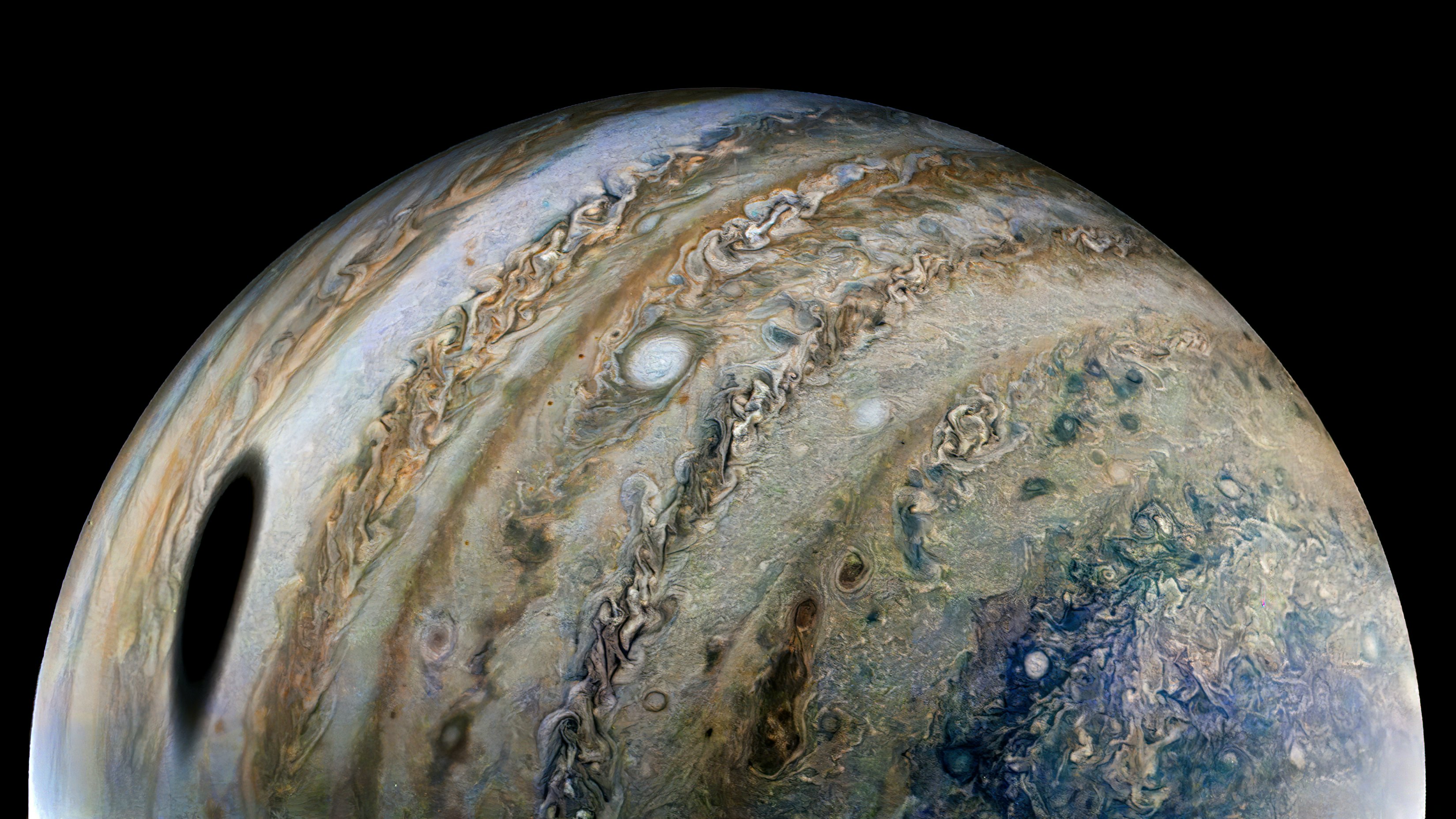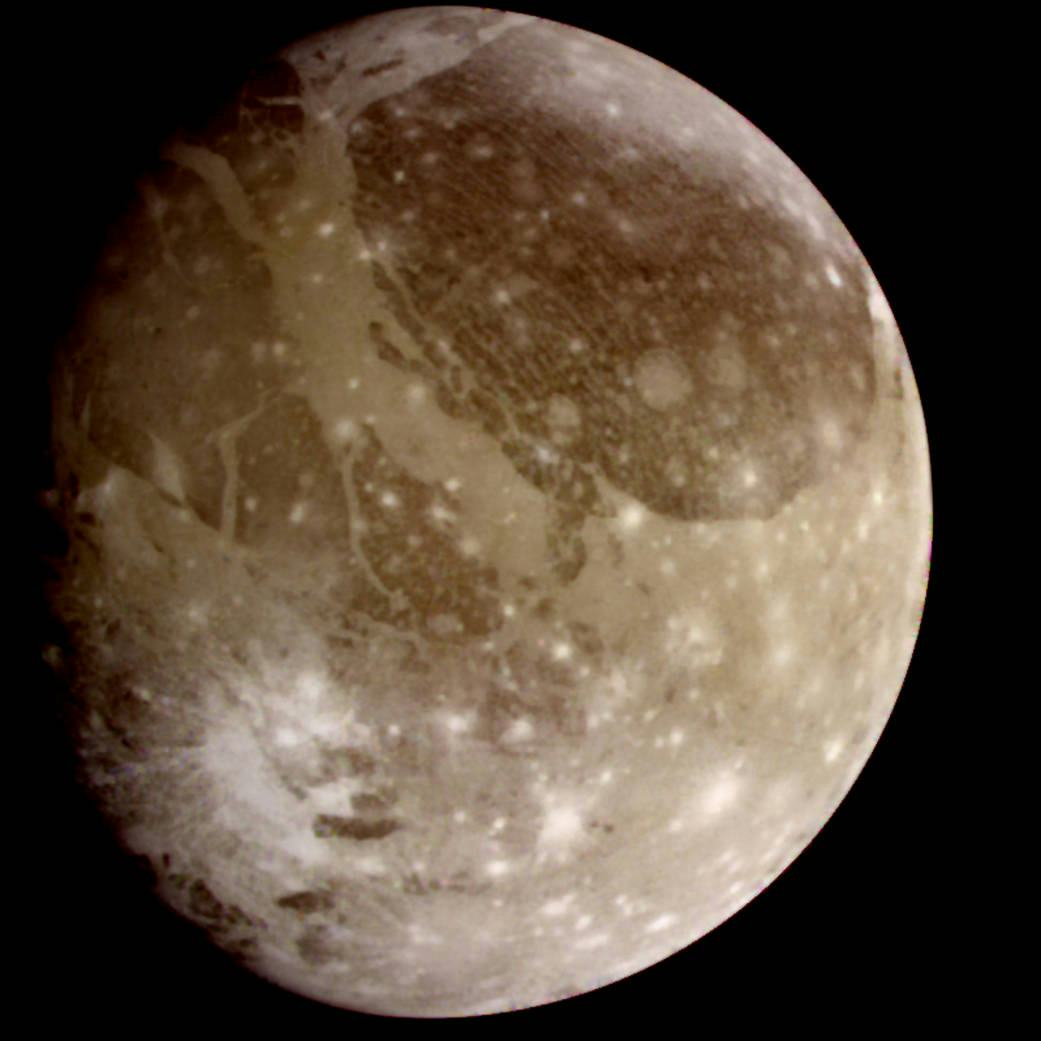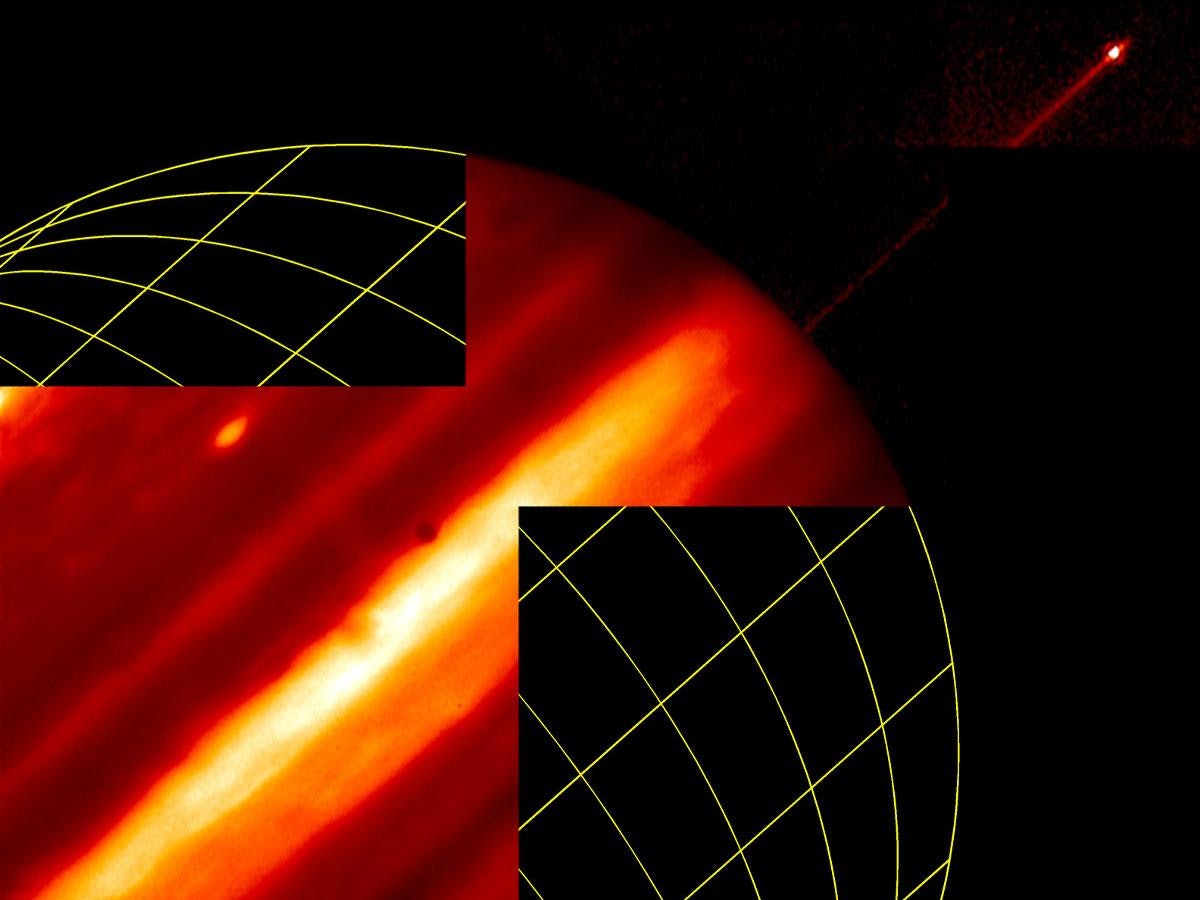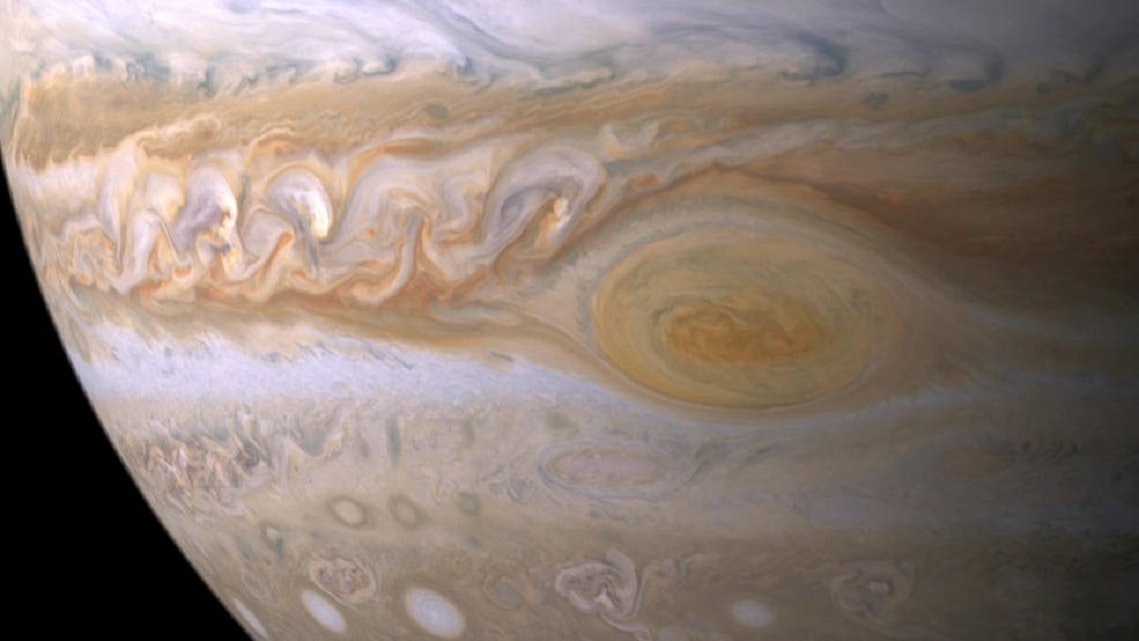
Some of the James Webb Space Telescope’s first real science won’t be all far-off galaxies and distant stars. In fact, some of the first heavy-hitting science will come from our cosmic backyard.
As part of the Director’s Discretionary Early Release Science Program — an initial round of studies carefully chosen to help scientists test Webb’s capabilities — University of California, Berkeley planetary scientist Imke de Pater and her team will use Webb to study Jupiter.
Our Solar System’s largest planet and its complex menagerie of moons and rings present some fascinating scientific targets for Webb. Along the way, the team will explore the limits of Webb’s abilities and find the best ways to use the telescope to study our own Solar System, which comes with a unique set of challenges for a telescope built to look 13 billion years into the past.
Webb will spend about 33 hours this summer observing Jupiter, its rings, and two of its most interesting moons: icy Ganymede and volcanic hellscape Io.

Ganymede: What’s under the ice?
Ganymede's icy surface is splattered with salty mineral deposits (mostly magnesium sulfate and sodium sulfate), along with carbon dioxide and some organic compounds. That material probably came from far below the surface, in the briny depths of the ocean that lies deep beneath Ganymede's ridged, cratered ice. It may have oozed up through cracks in the ice or burst upward in a cryovolcanic eruption (a cryovolcano erupts ice and water instead of rock and magma; they tend to happen on very cold, icy worlds like Ganymede and Europa).
Webb's instruments will map some of those salty deposits and measure their chemical makeup. Each molecule emits or absorbs light at different wavelengths; by separating all the light from an object into a spectrum of individual wavelengths, Webb's instruments can help scientists see what that object — Ganymede's surface, in this case — is made of.
"The spatial distribution of such materials may tell us more about the composition of a subsurface ocean, and of Ganymede as a whole," de Pater tells Inverse.
Most of what we know about the ocean under Ganymede's ice comes from measurements of the moon's magnetic field, which is affected by an 800-kilometer-deep global ocean sloshing around, and from some spectroscopic measurements of its surface by the Galileo spacecraft in the late 1990s. Webb will give scientists more — and higher-resolution — data about the minerals washed up on Ganymede's surface. That could hint at what nutrients may be floating around in the ocean to potentially support life, or at least the potential for it.
And de Pater hopes to spot cryovolcanic plumes bursting from Ganymede's icy surface.
"Ideally, we would detect plumes on Ganymede, like those observed on Enceladus and Europa," she says. "Although no such plumes have been detected on Ganymede, this does not mean they do not exist."
Webb will also observe Ganymede while Jupiter's shadow eclipses the moon. Without sunlight reflecting off the moon's surface, Webb will only see Ganymede's own thermal emissions, which will give de Pater and her colleagues a chance to look for infrared light from aurorae in the moon's atmosphere. That could offer some clues about how Ganymede's outer atmosphere interacts with charged particles from Jupiter's powerful magnetic field.

Looking for a dent in Jupiter’s rings
When we think of rings, we tend to think of Saturn, but Jupiter has rings of its own. However, Jupiter's rings are difficult to see because the particles of dust and rock that form them are too small to reflect much sunlight, making the rings hard to see against the brightness of Jupiter itself. That's where Webb's infrared instruments will come in very handy.
With Webb, de Pater and her team hope to learn more about the structure and formation of Jupiter's rings. They plan to look for small "moonlets," which may be the source of the dust that makes up Jupiter's rings.
"It is this dust that makes the ring visible, but its lifetime is short (perhaps only years)," de Pater says.
They'll also look for telltale ripples in the dusty rings, which may indicate that comets recently hit the rings and disrupted the dust particles' orbits. That happened once that astronomers know of: when comet Shoemaker-Levy 9 plunged into Jupiter in 1994. Webb will help look for evidence of much more recent impacts this summer.

Io is a terrible place, but an interesting one
Hundreds of volcanoes dot Io's surface, and at any given moment, you can find about 150 of them actively blasting lava and sulfurous gas several kilometers high. All of that volcanic gas affects the temperature of Io's noxious atmosphere, but we don't understand the details yet.
"On Earth, we take for granted that as you hike up a mountain, the air gets cooler," de Pater says. "Would it be the same on Io? Right now, we don't know. We haven't had the data to distinguish the temperature at different altitudes." That's why de Pater and her colleagues will use Webb's instruments to measure the temperature at different levels of Io's atmosphere.
They'll also use the telescope to find so-called "stealth volcanoes." Some of Io's volcanoes erupt in plumes of pure gas, without dust particles to reflect sunlight and make them visible in the wavelengths human eyes can see. Webb's high-resolution infrared instruments can spot these "invisible" volcanoes.
Webb will also help de Pater and her colleagues take the temperature of the hottest areas on Io's surface. The big question is whether those "hotspots" are on par with today's volcanic hotspots here on Earth or if they're even hotter — more like the extreme volcanoes that shaped early Earth. Data from the Galileo spacecraft and ground-based telescopes here on Earth suggest hotter temperatures, but Webb will hopefully be able to answer the question more definitively.
The researchers will collect some of that data while Jupiter's shadow is eclipsing the volcanic moon, ensuring that the only light Webb can see is infrared radiation from the moon itself.

Storm chasing in space
Webb will also help us better understand the Great Red Spot, the 16,000-kilometer-wide storm that has raged for 200 years in Jupiter’s southern hemisphere. The storm is slowly shrinking, and the more we learn about its mechanics, the better we’ll understand how it formed, how it’s lasted so long, and why it’s finally, gradually dying down. Here on Earth, the flow of heat energy is a significant factor in how storms form and fade, and that’s probably also the case with Jupiter. And something strange is happening in the atmosphere around the Great Red Spot.
“We know that the immediate atmosphere above the Great Red Spot is colder than other areas of Jupiter, but at higher altitudes, in the mesosphere, the atmosphere appears to be warmer,” de Pater says. “We will use Webb to investigate this phenomenon.”
Far from the Great Red Spot, at Jupiter’s north and south poles, the weather is also perpetually stormy. Cyclones 1,000 kilometers wide circle both of the gas giant’s poles, as NASA’s Juno spacecraft discovered in 2016. Soon, Webb will measure the wind speeds, temperatures, and the composition of the clouds that make up those massive polar storms.
“We hope JWST will shed more light on the chemistry and dynamics of these regions throughout the atmosphere, from pressures as small as [nanobars] (i.e., a billion times less than the pressure on earth and Jupiter’s cloud deck) down to below the main cloud deck,” de Pater says.
Why It Matters — Besides learning some interesting things about Jupiter and its moons, de Pater and her colleagues expect to gain some hands-on, practical knowledge to help future astronomers use Webb to study objects in our Solar System or distant exoplanets.
For instance, Jupiter’s bright surface tends to scatter sunlight, which can add to the challenge of observing its faint rings and smaller moons. So de Pater and her colleagues will test techniques to deal with that light-scattering. They’ll also build computer models to help astronomers recognize and adjust for it while processing data from Webb. That could help with future studies of Jupiter and observations of exoplanets orbiting bright stars.
“We also will develop tools to [make mosaic images of] regions on Jupiter (like the Great Red Spot), which is complicated since the planet not only moves, but also rotates during the observations,” de Pater says.
Figuring out how to get the most out of Webb when observing different types of targets, like a gas giant in our own neighborhood, is part of the goal of the Director’s Discretionary Early Release Science program, of which de Pater and her team’s observations are a part.
What’s Next – It will be exciting to watch Webb probe the mysteries of the deep, distant universe, but much of our own cosmic backyard is still full of mysteries. Webb will help astronomers and planetary scientists tackle a few of them over the coming year. About five percent of Webb’s first year of science will focus on targets here in our solar system, including more studies of Jupiter, asteroids and other near-Earth objects, and the often-neglected ice giants Uranus and Neptune.







